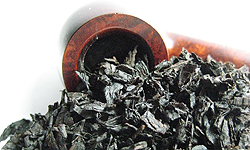 Perique is a unique and rare type of tobacco that comes exclusively from one small swath of land near New Orleans. It is used as a "condiment tobacco" to make nearly a hundred different brand name pipe tobacco blends from around the world. It’s existence has been in jeopardy more than once, first in the late 1990s and then in 2005. It may have become "extinct". In 2005, the L.A. Poche Perique Tobacco company was purchased by Mark Ryan, and a new era for Perique began. This tobacco has an intriguing history, and it adds a delectable nuance to many different blends. We sat down and chatted with Mr. Ryan recently so he could tell us the story of Perique tobacco.
Perique is a unique and rare type of tobacco that comes exclusively from one small swath of land near New Orleans. It is used as a "condiment tobacco" to make nearly a hundred different brand name pipe tobacco blends from around the world. It’s existence has been in jeopardy more than once, first in the late 1990s and then in 2005. It may have become "extinct". In 2005, the L.A. Poche Perique Tobacco company was purchased by Mark Ryan, and a new era for Perique began. This tobacco has an intriguing history, and it adds a delectable nuance to many different blends. We sat down and chatted with Mr. Ryan recently so he could tell us the story of Perique tobacco.
Several articles have been published about Perique Tobacco, but some of the information is now out-of-date. Here is the most up-to-date information on Perique as told to us by Mark Ryan, the owner of L.A. Poche Perique Tobacco.
L.A. Poche Perique Tobacco, is in St. James Parish, Louisiana, right on the Mississippi River. It’s been in business since 1917. I bought it in 2005 and in the last century, there were three processors of Perique. The Roussel family was one and they stopped around 1950.
I think they were the largest. And then there was another family, the Gugliomo’s, and they did Perique until about 1978, I believe. And then Mr. Poche, he started in 1917 and around 1980 was the world’s exclusive source for Perique.
Perique is something that the Indians did for over a thousand years, the Choctaws and Chickasaws down in the Louisiana area, on this little, triangular wedge of land that comes off the Mississippi through St. James Parish. There’s a particular soil from there and it’s called Magnolia Soil, and it’s the climate and the soil and the leaf and everything that makes that crop unique.
There’s some debate, somewhere around 1780-1824, this Cajun fellow, this Acadian guy, Pierre Chenet, was credited with discovering the Perique process, which the Chickasaws and the Choctaw Indians were using for a thousand years.
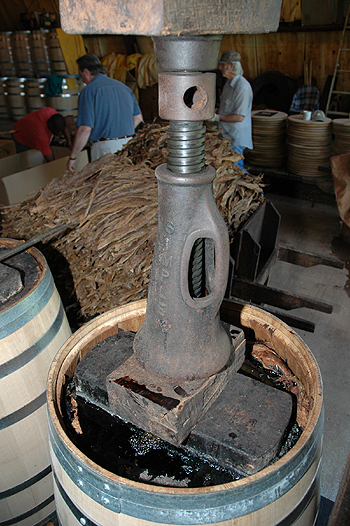 He made it a process for Westerners and it became a pipe tobacco ingredient in the 1800s, mostly from Pierre Chenet, and back then it was very primitive still, but it’s still; tobacco that’s processed under high pressure, anaerobically, which means without exposure to air, and we now do it in an oak whisky barrel. The Indian’s used to do it in hollowed out tree trunks. You know, if you wonder how in the world did they invent that a thousand years ago, that they would have thought to put that tobacco under high pressure, it’s beyond me, but they did, and we’re benefiting from it today.
He made it a process for Westerners and it became a pipe tobacco ingredient in the 1800s, mostly from Pierre Chenet, and back then it was very primitive still, but it’s still; tobacco that’s processed under high pressure, anaerobically, which means without exposure to air, and we now do it in an oak whisky barrel. The Indian’s used to do it in hollowed out tree trunks. You know, if you wonder how in the world did they invent that a thousand years ago, that they would have thought to put that tobacco under high pressure, it’s beyond me, but they did, and we’re benefiting from it today.
Mr. Poche actually, his great grandfather is Felix Poche, who is a real famous Louisiana person during the Civil War; was like a Thomas Jefferson equivalent of Louisiana. Felix’s great grandfather was Pierre Chenet. So the Poche Company that I now own has a direct lineage to the first western person who discovered Perique and to take advantage of it.
There’s been some concern because a lot of the farmer’s have stopped growing, it’s very labor intensive. For a minimum of a year in the barrel, we physically take every leaf out of the barrel a minimum of three times, the leaf’s are reversed in order in the barrel, the pressure’s put back on. I mean, it actively ferments for the first four, five, six months. You can see the bubbles and everything and then it’s going through a malolactic fermentation, kind of like the way grapes go to wine. So that’s why you get all these complex flavors. But it’s an expensive product. You can’t rush the process. It’s got to be in the barrel a minimum of a year before I sell it.
When we took over in 2005 I know a lot of people were concerned; oh, a North Carolina boy’s going to go down there and mess it all up. But what we did when we got in and when I bought it in 05, a lot of people don’t realize this; I bought it May of 05; Mr. Poche hadn’t bought any Perique at the beginning of the year, because you buy it at the beginning of the year.
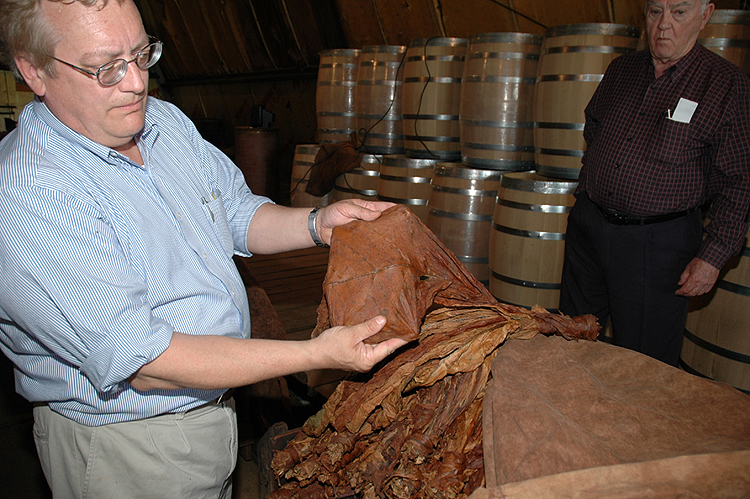 |
| Mark Ryan, owner of L.A. Poche Perique Tobacco inspects a "torquette" |
So, the world didn’t know it, but for about five months, the world supply of Perique was gone forever other than what was the legacy and the inventory in the factory. So when I bought it in 05, I went on the secondary market, because I couldn’t buy direct because everybody already sold their products, so I got some to process and we got a little start that year and we’ve been growing it every year since. I’ve been working very aggressively on it. I’ve got seven farmers growing for me now. I’ve got farmers in Paulina.
PipesMagazine.com: Why was there no Perique in 2005 when you bought the company?
Ryan: It was too labor intensive, none of the young kids want to do it. We physically pull every stem out of every leaf. They have to be wrapped in bundles, they have to be put in a barrel very carefully, you’ve got to put the pressure on it, you got to watch the pressure everyday. The kids don’t want to do that. It’s too labor intensive, they don’t want to do the work. They can work in a chemical factory down there, chemical plant, and make a lot of money. The young kids today don’t want to do the labor work.
Well, one thing that we did is we looked at what was going on, we set the best practices for everything, for the farmer’s and for the processing. We also raised the reimbursement for farmers. I paid them enough that now all of a sudden, I’ve got all these guys wanting to grow.
Another thing that we did, which I think is really going to save Perique in the future; what we did, which is, I think, really going to save and turn it around, is the farmer’s don’t want to do all the processing. So it occurred to me, the sooner we get the tobacco from the farmer, the better it’s going to be anyway, because we’ve got the best processing and we’re on it everyday. So I thought was, let’s be a receiving station and receive the raw tobacco in from the farmer.
PipesMagazine.com: So, this is new?
Ryan: This is something new. We did an experiment for the first time in history. I had Grant Martin grow 20,000 plants for me, which we brought in, cured, but not processed. So they’d been up in the barns, so you know, the moisture got out, we brought them down as basically just raw unprocessed tobacco. We did the stemming and everything. And we’re the world source. I mean, there’s one farmer that grows exclusively for a cigarette manufacturer, well, which Mr. Poche used to buy from, but we don’t buy from now. But other than that, all the other guys grow for us. The other farmer that now grows for the cigarette guy, he doesn’t have to process the same way because in cigarettes they can use the stem. So, the Perique that guy does, we couldn’t use anymore anyway because the pipe guys don’t want the stem. So our labor is dramatically more than theirs.
 |
| Perique Tobacco ferments as it is pressed under extreme pressure in oak whiskey barrels |
But I’m real happy that we’ve got the volume of the Perique now that we’re selling is double what Mr. Poche did for 5-10 years before I bought it. And with the receiving station that we’re building now, in 2011, our capacity will go up 100% and it will double again in 2012. We’re doing that because demand is growing again, but also, there are new outlets for it. We’ve got folks in other cigarette companies potentially interested, we got cigar guys interested, and it’s a little bit of a gamble but if you don’t establish a strong foundation, Perique’s still in jeopardy. So, we’re continuing to do what we can to protect the culture and tradition of Perique.
PipesMagazine.com: Now, tell us about Perique as far as being used in blending and in smoking, because I’ve heard that you don’t normally smoke Perique by itself. I’ve heard that it’s used more like a condiment for using with other tobaccos and blending. Is that correct?
Ryan: That’s right. Perique is used as a blending ingredient, like Latakia. It’s got a lot of character, a lot of richness, and it adds a lot to a blend, but too much can dominate to an extent that you don’t want that in there, just like with the Latakia. Some folks want straight Perique, but it’s not something the average person’s going to want, so it’s usually used in a blend, most commonly with Virginia. It’s a natural blend with Virginia. They compliment one another well. It makes the Virginia more smokable, cuts back on some of that cottony dryness you get in the back of your throat from Virginia, and it’s so much flavor. The flavors that you get out of the Perique are unbelievable. I mean, you’ve got that fermentation sort of fruity component, you’ve got an olive component, you got like a fine nut component, you got layer and layer of flavor from Perique. And we have both types. The one that most folks get is the blend, which is called Acadian Perique, and then the Straight St. James, which doesn’t sell as much, and we have that also.
PipesMagazine.com: The Straight St. James, that’s the 100%?
Ryan: That’s 100% St. James. What the guys discovered in the first half of the last century was that if you have a bad season, you lose 100% of the Perique and there’s none for anybody. And then the manufacturers phase it out.
Well, what the Roussel’s did, and I think really it’s credited to them because they were really ahead of the curve for everybody back then; in fact, it was Mr. Roussel back in 1905 who industrialized it with the barrel. Before then they were still using wooden boxes, which Pierre Chenet did. So their family was on the leading edge.
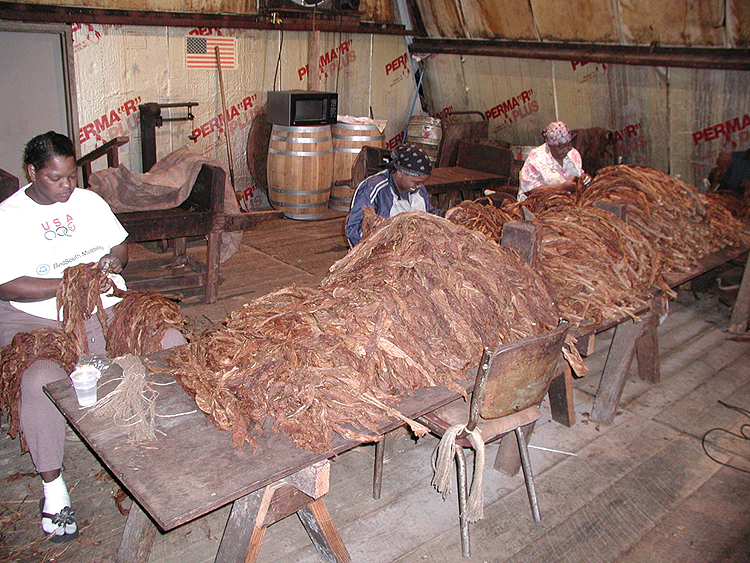 |
| Perique Tobacco is de-stemmed by hand |
But he experimented to find out what other tobaccos were available. They would ferment in a process similar to the Perique and it could be used in a blend so that year after year you could have continuity and quality and you could put some Perique back to blend so that you could have this mixed blend so that there would be continuity. (Editor’s note: Kentucky Green River Burley, mixed with the St. James tobacco is most commonly used to make Perique. This particular version is the Perique that most pipe smokers are familiar with. It is referred to as Acadian Perique here.)
So they all did it in the first half of the last century, to different degrees. People didn’t really realize that it was a blend primarily that was available. And they had to do that or we wouldn’t have Perique today.
PipesMagazine.com: Are there different types of Perique?
Ryan: I mean, we label it as two types; the Acadian and the St. James.
Ryan: But really until we brought that to everybody’s attention I guess, folks didn’t realize that what everybody’s consumed exclusively since 1980, was the Acadian blend because Mr. Poche was the world’s only source since 1980.
And what I have found is the manufacturers, because all we sell to is manufacturer’s in these 500 pound barrels, they don’t want the straight St. James. In the five years I’ve had it, I’ve only sold one barrel of straight St. James to a company in Germany. They prefer the Acadian blend because it’s got consistent quality every year, they know it’s available, and it’s less expensive, but the main thing is the quality is fantastic year in and year out. You don’t have to worry about the variability in quality. Am I going to get a barrel I got to destroy because it’s rotton?
PipesMagazine.com: Right. Quality and consistency is extremely important when you have a brand name tobacco and when somebody buys that today and they buy it tomorrow and a year from now, they want it to be; they need to receive the same thing.
Ryan: Absolutely. And with the St. James, when I buy from these farmer’s, I buy every leaf from them. The dark air cured tobacco, which comes from Tennessee, Kentucky, or wherever, that’s a 30 million pound market. We’re cherry picking like 30 thousand pounds or whatever our annual purchase is. We’re getting the best of the very best. So those leafs have the full body, they’re just great quality, and that maintains the quality of the product and it gives us availability because that’s a gigantic market. And we cherry pick the best.
PipesMagazine.com: What are some brand names and blends that people can go and purchase if they want to experience Perique?
Ryan: I tell you one that I’ve tasted most recently. Per Jensen from Mac Baren ordered a couple of barrels from us early in the year and actually bought a couple of vintage barrels. I gave him the option. We had some that had a couple of year’s age on them and wisely he got this because the more it ages, the better it is. And he came out with one this year, (HH Acadian Perique), it’s in a green tin. It is so good. I mean, just stunning.
PipesMagazine.com: I have some with me here at the show.
Ryan: It’s amazing, isn’t it? Oh my God. And then all the guys have some good stuff. His happens to be exceptional and I’ve had it recently so it’s in my memory. But you know, Altadis has a bunch. In fact I saw Robert Germain from J.F.Germain & Son from the Channel Islands in Germany a couple weeks ago. We sold to him, so he produces one. (J.F. Germain Royal Jersey w/Perique) Cornell and Diehl buys a lot of Perique from us now. They do some exceptional blends. Mike McNeal from McClelland. Basically anybody on the floor that bought Perique since 05 has gotten it from me. Before that, it was Mr. Poche.
Here are some Perique Tobacco Blends recommended by our forum members:
Blakeney’s Best Acadian Ribbon (McClelland)
Mac Baren HH Acadian Perique
Ashton Artisan’s Blend
Frog Morton on the Bayou
Cool Hand Fluke John Patton
Cornell & Diehl Kajun Kake
Cornell & Diehl Mississippi Mud
G.L. Pease Samarra
James J. Fox Dorisco Mixture
More information on Perique Tobacco:
Wikipedia Perique Entry
Perique has made a fiery comeback



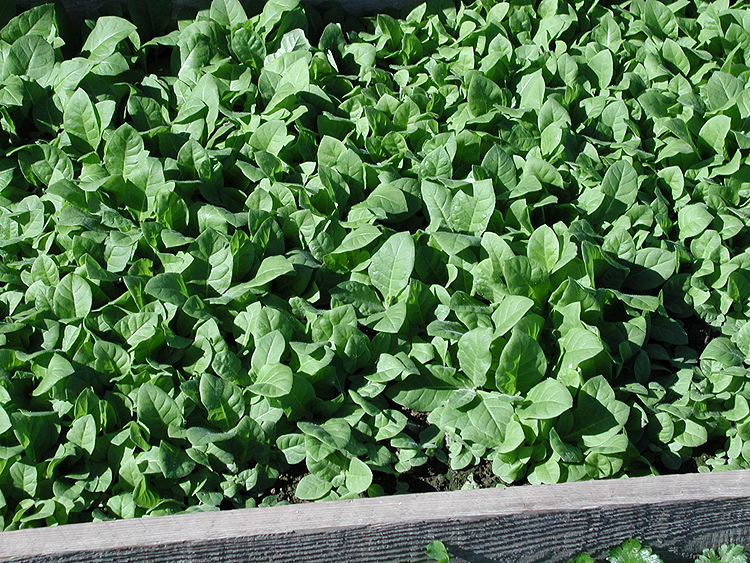
















Amazing interview. I am floored. The best tobacco read I’ve had maybe, ever. The Southern culture dripped like molasses, from the print and photos. I have never read a comprehensive article on the makers of Perique tobacco.(The process reminds me somewhat of another aged in the barrel Louisiana specialty, the world famous Tabasco hot sauce.) This whole Perique business seems very precarious. I will remember those guys in this article, whenever I am enjoying my pipe full of my favorite Perique blend. Thank you Kevin.
I also learned that cigarettes use stems. Yucch!
Thanks dunendain. Mark is a super nice guy, and extremely intelligent. He is a real tobacco entrepreneur. He also owns D&R Tobacco in North Carolina, which produces several types of pipe tobacco blends.
I’m glad you enjoyed the article and found it interesting.
Kevin, do you know if the they give tours of the operation? The next time I go visit my family, I would like that. I think my sons would too.
I just talked to Mark on the phone to ask him about tours. Yes, in the future, but not right now. He said he restored the old homestead where the Poche’s used to live, so that could be part of the tour.
Stay tuned for more info later this year. We will be sure to publish it as soon as it’s available.
Very intreresting interview. I will ponder upon it when I have my have may next bowl of Samarra!
I met Mark Ryan at the Richmond show about three years ago and he is a true gentleman to be sure. We were all very happy to see him and speak with him about this wonderful tobacco. I submit for your review, if you are a Virginia smoker than the blend that outshines all the others is St. James Woods by McClelland Tobacco. Right out of the tin it is great but after 5 years of aging it is amazing and after 10 years of aging it is nothing less than profound in flavor and complexity.
Great article. Thanks for updating us on the status and mystery of perique, and letting us know there is demand, tobacco growers, and future for this unique type of tobacco.
I visited them this last spring, watched as they turned a few screws, stripped leaves, and laughed the work away. Very friendly folks!
Great article! Mark is a great guy!
I couldn’t imagine where pipe tobacco blends would be right now if he had not bought and kept producing Perique tobacco. I love Perique!
If only one could marry pipesmagazine.com :/ I’m already so much in love with this site
And I agree – HH Acadian = Perique Perfection!
Ha ha ha! Thanks pipedawg! She is going to play the field awhile before she gets married, but you can flirt with her. You need approval from her father first too. 😉
Fantastic article!! Very interesting read!!
Keep up the outstanding work!
Great Article! Thanks for sharing.
Dan
Well-conceived and written piece accompanied by excellent photos. The barrels appear to be new, and white oak. Anyone know if used bourbon barrels have been tried for curing? If the Scots use them for whiskey, perhaps they’d impart some character to tobacco as well.
Thanks again, Bruce.
I believe the inner description on Orlik Bull’s Eye said that the Perique had been cured in old whiskey barrels or something… I’ll do a checkup and return with facts! 🙂
Thanks, pipedawg. I’d like to think that those used Knob Creek barrels I help empty every evening are going to a good home.
Always good to have more education of the hobby, it seems to make it that much more pleasurable. would like to see more illustrative photos of the processing. really got into it. Thanks very much
An informative article and a great read with the photos! I’m a huge ‘perique’ fan & smoke several blends with perique.
I bought a couple ounces of straight perique from Tobacco Village in Wilmington,DE and man is it heady stuff! If you ever decide to taste it straight do it in a very small bowl. I used a medium size bowl and had to stop halfway through. I’ll never regeret it but won’t be doin’ it to often either. I just wanted to taste some blenders straight so that I know exactly what they taste like and then I could use my imagination to make my own blends.
“Ryan: In fact I saw Robert Germain from J.F.Germain & Son from the Canary Islands..”
No, the *Channel* Islands, in “that channel” between UK and France.
No knitpicking intended, just putting things right.
regards
FE
Thanks for the correction Florian. It’s been fixed in the article.
I have to disagree with Mr. Ryan on one thing.
Consistency, particularly of flavor is not the be all-end all.
Consistent quality yes, but look at fine wine and the variation from year to year they have.
I’d love to see something similar in the tobacco market. So, say 20-30 years from no a 2010 tobacco is highly regarded, be it a pipe, cigar or cigarette tobacco.
It’s not like the “big names” haven’t changed over the years. I’d sure like to try some of the popular tobaccos from 50+ years ago (like a WWII Camel and Lucky Strike).
This article provides a wealth of information and historical interest. I’ve revisited it several times to study the details in the photos.
Wow…Amazing !!!
There use to be a strong cigarette that was filterless and were supposed to be high in perique tobacco and known to be not for the faint hearted or novice smoker. Why else would we have tried it in high school? It was the “Picayune” brand. I live about 30 miles from where this unique type of tobacco is grown and I’ve been to that area years ago at a time when there was little to no production going on. I’m glad to hear it’s up and running again. Few people know of this world famous crop. I plan to visit the area again soon. I wonder if they allow “tourists” to look around.
.
Is more information now available regarding tours of the property? Is it possible to pick up some 100% St. James while I’m there?
I flop between cigs and a pipe every so often. I love the process of Perique and recently found that American Spirit has a perique blend of cigarettes. Way to go on keeping this process alive and giving tobacco farmers freedom to grow and cure how the please.
Interesting article. I smoke the American Spirit Perique Tobacco Blend cigarettes. Thank you Mark Ryan for keeping this on the market and doing it the way it has always been done.
I have been a customer of Mark Ryan’s for many years. I roll my own cigarettes and he has some of the best product for such. I have purchased many bags of the “SJ Rimboche” perique to add with another of his tobacco’s called “Ryback”. The result was a great tasting smoke. It was nice to see what Mr. Ryan looks like after all these years. I have been a customer for well over 10 years now.
I served in the British navy for 6 years (1940-1946). We were able to buy thru the Navy a “prique”or “perique” tobacco which came in a torpedo shaped bundle tied with yarn about6 inches long and 1/12 inches in diameter. I think this was traditionally supplied like the 150 proof Naval rum.Its shape led to the obvious inuendo! The source of the tobacco? The tobacco itself was dark black or very dark brown. I think there was a material between the tying yarn and the tobacco. Can any one provide any information. It must have ben a tradition in the British navy and perhaps came from a British colony in the Carribean like Jamaica where the rum came from originally. Any information?
Beautiful article! I dream to smoke St.James… Acadian is less attractive.